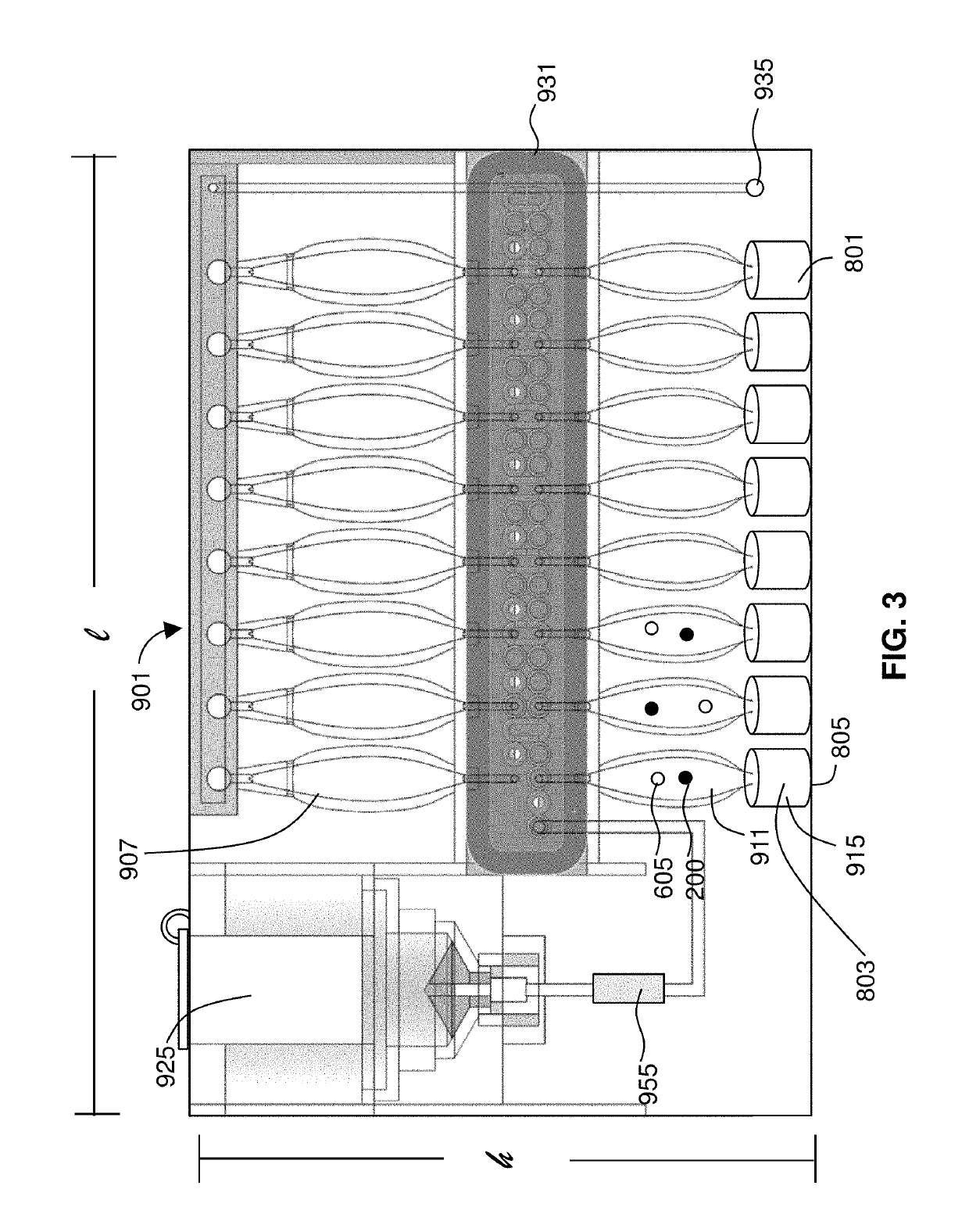Detection of targets
a technology of target microorganisms and detection methods, applied in the field of detection of targets, can solve the problems of pseudomembranous colitis, toxic megacolon, multi-organ failure, etc., and achieve the effect of saving time and cost, rapid, sensitive and accurate detection of target microorganisms in a sample, and detecting target microorganisms quickly and accurately
- Summary
- Abstract
- Description
- Claims
- Application Information
AI Technical Summary
Benefits of technology
Problems solved by technology
Method used
Image
Examples
example 2
g the Analytical Performance
[0163]To estimate the analytical sensitivity of the C. difficile toxin B test in stool matrix, a pooled stool sample was used, which included 14 randomly chosen clinical samples that gave negative results when tested by a real-time PCR C. difficile test. The pooled sample spiked with C. difficile toxin B was tested in a series of two-fold dilutions. The method delivered a limit of detection of 45 pg / ml for C. difficile toxin B (FIG. 9). Similar results were also observed when a different pool of PCR negative stool samples was used. At a toxin B concentration of 45 pg / ml, the reaction contained approximately 100-fold excess of magnetic particles compared to the number of toxin B molecules. At this analyte concentration, magnetic and fluorescent particles must, on average, be tethered together by single toxin B molecules confirming that the method detects single molecules by imaging without using magnification. Furthermore, the precision profile in FIG. 10 ...
example 3
and Mitigation of Matrix Effects by Assay Controls
[0165]Positive and neutralizing assay controls were designed to facilitate detection and subsequent mitigation of sample matrix effects. The assay controls and the toxin B test were performed in parallel on equal aliquots of a mixture containing clinical sample and assay reagents. The positive control includes a defined amount of spiked toxin (100 pg). A deviation of the positive control signal that is lower than the expected result indicates negative assay interference (assay inhibition). The neutralization control contains toxin B neutralizing antibodies that sequesters toxin B in the clinical sample, making it undetectable in the assay. In this way, the neutralization control distinguishes specific signal derived from toxin B in the sample from non-specific signal. Non-specific signal can result from analyte-independent deposition of either fluorescent particles or auto-fluorescent sample components on the detection surface. In th...
example 8
Sensitive Anthrax and AST Tests on an Automated Platform
[0216]Testing using the methods herein saves lives, lowers costs, and decreases resistance. Patients get targeted narrow spectrum therapy at the onset of infection. The methods lower morbidity, mortality, and length of hospital stay, and decrease the spread of resistance.
[0217]Technology used addresses a uniquely broad range of key market applications. Proof-of-concept data was obtained from clinical samples, and working platform prototypes were used. There is pressure to lower inappropriate use of antibiotics (POC, hospitals), and significant financial pressure on hospitals to lower infection rates.
[0218]The platform provides high-performance, rapid, affordable tests for hospitals, clinics, and physician office labs. The dual-use platform is suitable for key clinical and public health applications and provides rapid AST for all major syndromic infections and rapid ultrasensitve tests for toxins and pathogens.
[0219]The technolo...
PUM
| Property | Measurement | Unit |
|---|---|---|
| density | aaaaa | aaaaa |
| density | aaaaa | aaaaa |
| density | aaaaa | aaaaa |
Abstract
Description
Claims
Application Information
 Login to View More
Login to View More - R&D
- Intellectual Property
- Life Sciences
- Materials
- Tech Scout
- Unparalleled Data Quality
- Higher Quality Content
- 60% Fewer Hallucinations
Browse by: Latest US Patents, China's latest patents, Technical Efficacy Thesaurus, Application Domain, Technology Topic, Popular Technical Reports.
© 2025 PatSnap. All rights reserved.Legal|Privacy policy|Modern Slavery Act Transparency Statement|Sitemap|About US| Contact US: help@patsnap.com



